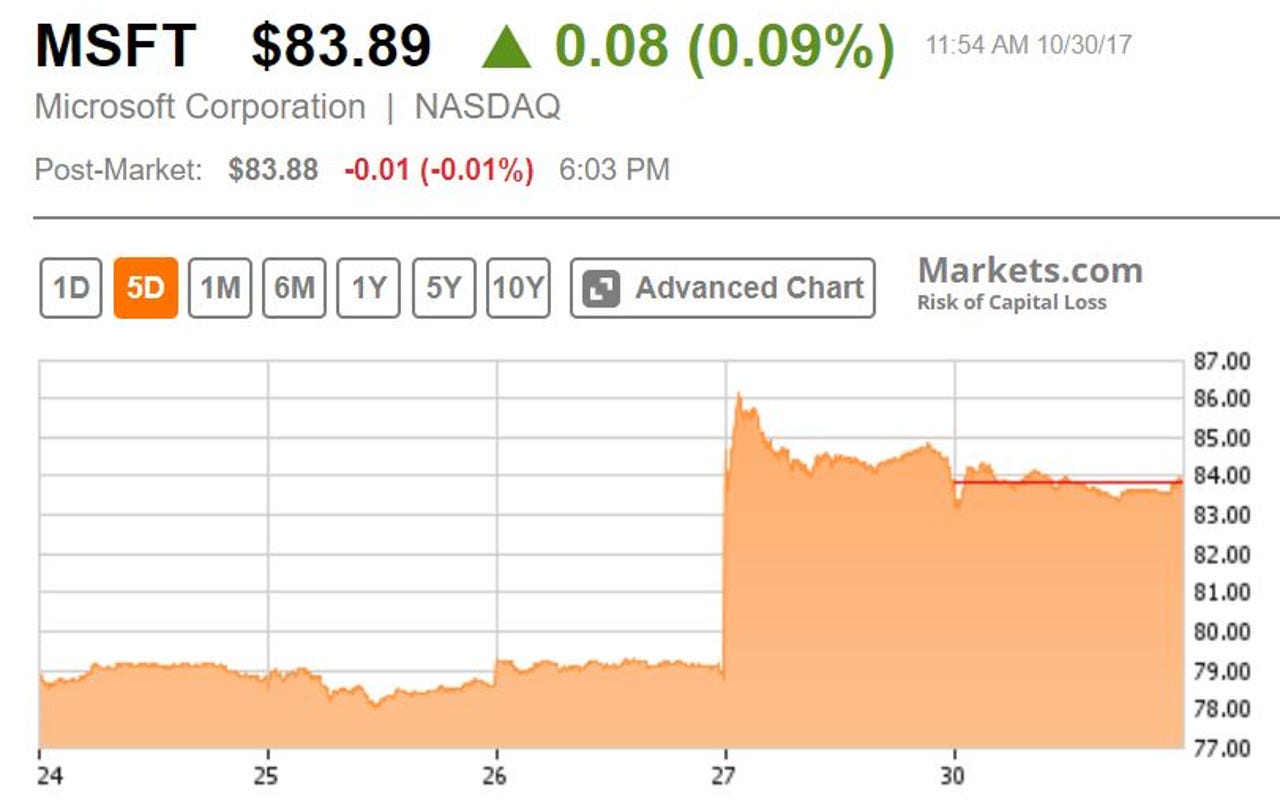For Microsoft, the hybrid cloud is the destination, not a staging post

Microsoft's share price jumped after the company announced its latest quarterly financial results
Microsoft's share price jumped to an all-time high after it reported quarterly earnings last week. BMO Capital Markets raised its price target from $86 to $94, and the stock's fans are already speculating on when it will reach $100. It's a remarkable change in sentiment compared with the previous decade when the share price went nowhere.
Partly that reflects Satya Nadella replacing the under-appreciated Steve Ballmer as CEO. But more importantly, it reflects Microsoft's claim that its cloud revenues "exceeded $20 billion" at current annual run-rates.
Way back when, users might have thought that Microsoft was doomed, because its products ran on PCs and servers. In fact, it has found even more success by running them in the cloud, with Office 365 and other software running on Azure.
The latest quarterly results showed Microsoft revenues increasing by 12 percent to $24.5 billion, and net profits up by 16 percent to $6.6 billion. These are not signs of a dying company.
What was interesting about the conference call on Microsoft's results (transcribed at Seeking Alpha) was Nadella's insistence that Microsoft's strength lay in the "hybrid cloud".
It seemed as though Nadella wanted to contradict the idea that the industry is moving from local computation to centralised cloud-based computation, as promoted by rivals such as Google and Amazon. In response to an analyst's question, Nadella said: "We always believed in distributed computing, and we've built for that, so when we say hybrid, we never thought of it as some kind of a temporary state but we always thought the edge and the cloud was going to be where the application pattern was in fact going to get to."
Microsoft is winning not because companies can "lift and shift" workloads to the cloud, but because Microsoft can, almost uniquely, make on-premise and cloud computing work together. (Adobe is another leading example of this approach.) In Nadella's view, the future is distributed, with both an "intelligent cloud" and an "intelligent edge".
In his prepared remarks, Nadella said:
"We've been focused on addressing the real-world needs of customers with our differentiated approach to the cloud, architecting for hybrid consistency, developer productivity, AI capabilities, and trusted security and compliance. Moreover, customers are choosing the Microsoft Cloud for its operational consistency, productivity and security that spans the entire digital estate, inclusive of Windows 10 security and management, Dynamics 365, Enterprise Mobility + Security, and Azure.
"Let's double-click on hybrid. To support the emerging intelligent cloud/intelligent edge application pattern, you need a consistent stack across the public cloud and the edge. Merely providing co-location services or connectivity between on-premise data centers and the public cloud is not sufficient to meet customer needs. You need consistency across the development environment, operating models and technology stacks.
"Azure provides this consistency across the entire stack, inclusive of identity, data, app platform, security and management at the edge and in the cloud. Our hybrid cloud is one of the reasons nearly every Fortune 500 company has chosen to partner with Microsoft."
As ZDNet's Larry Dignan wrote earlier today: "Microsoft's commercial cloud and AWS are apples and oranges." It's a misguided comparison.
Meanwhile, of course, Microsoft has moved on from Nadella's "cloud first" mantra to something like "AI Everywhere". Microsoft's latest annual report, published in August, restated its mission statement as follows: "Our strategic vision is to compete and grow by building best-in-class platforms and productivity services for an intelligent cloud and an intelligent edge infused with AI."
Artificial Intelligence is the new area where Microsoft will have to compete against Amazon and Google.
Whether companies want to move everything to the cloud, stay on-premise, or mix on-premise and cloud computing, is not a religious issue for Microsoft. It supports all three, so customers can do whatever works for them.
